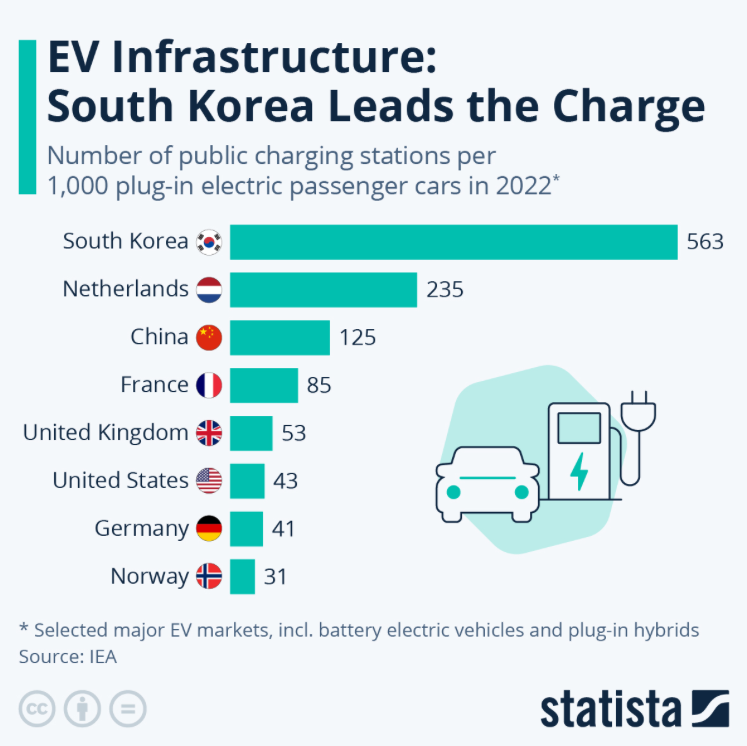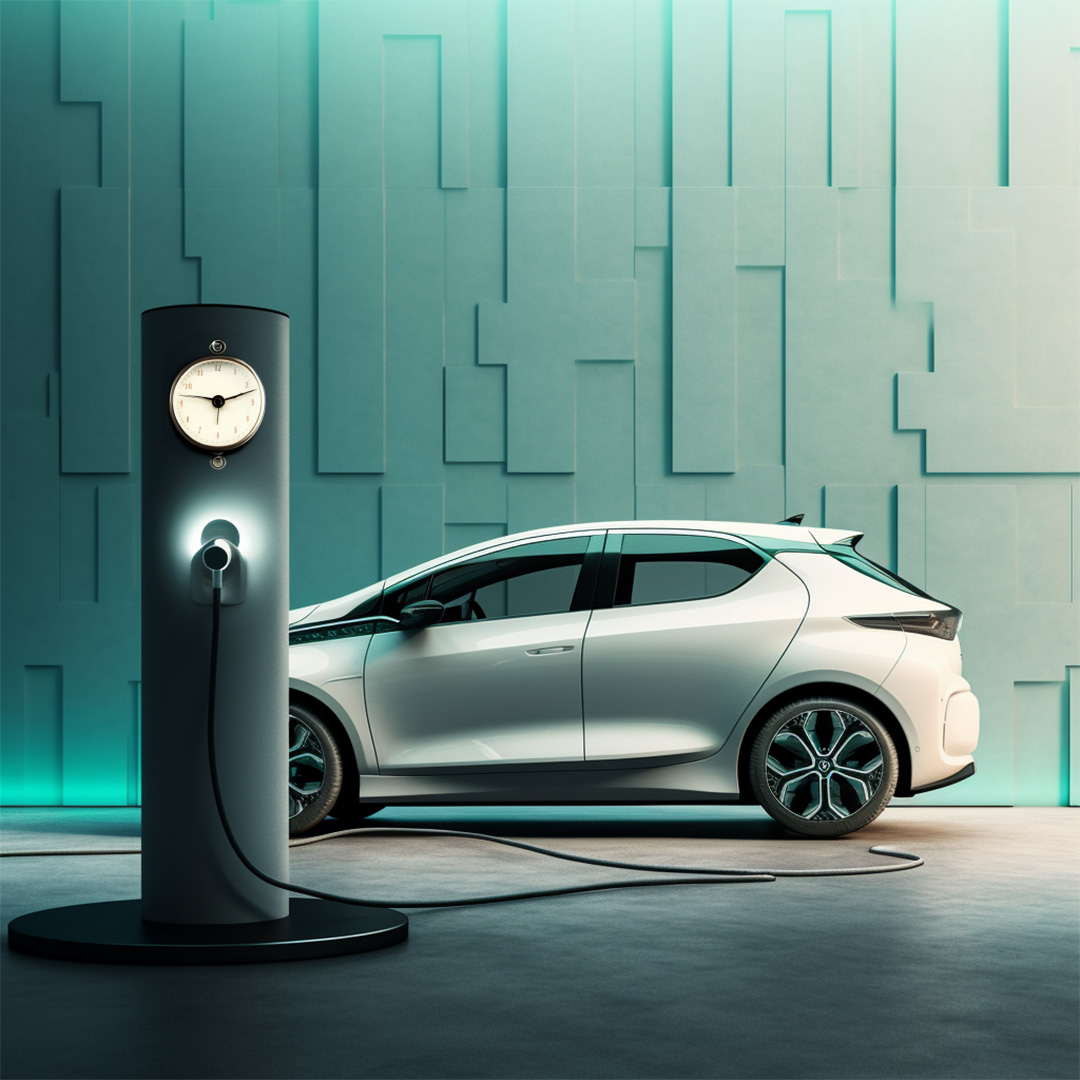According to data from the International Energy Agency, there were 2.7 million public charging points worldwide at the end of last year, of which more than 900,000 were built in 2022. These charging stations form the backbone of the EV ecosystem, providing EV drivers with access to charging points anytime and anywhere.
South Korea leads in terms of charging points relative to the number of EVs with 563 charging stations per electric car. The country thus has the highest density of all major EV markets in the world. The Netherlands follows in second place with 235 public charging stations per 1,000 electric cars. And although China, with 1.76 million charging points, represents almost two-thirds of the global public charging infrastructure, it ranks third in terms of charging stations per EV on the road.
Despite the expansion of the public charging network shifting into high gear, the lion's share of cars are simply charged at home. Underlying reasons include the lower energy costs of home chargers and the maze of prices in public places. Nevertheless, especially in busy urban areas where home charging is much less common, there is a growing need for a clear and accessible charging network.

The rise of China in electric mobility
It is noteworthy that South Korea and the Netherlands, in terms of the number of electric passenger cars on the road, pale in comparison to China when you place them side by side in another graph, from Statista. In terms of the number of electric cars, the Netherlands was in seventh place last year (340,000 electric cars), followed by South Korea (300,000). China towers at the top with 11 million EVs, while the United States is in second place with "only" 2.1 million.
What is particularly striking is the enormous growth that has been made in China, which all the more confirms how ambitiously this country is working on its EV market. Not only in terms of the charging network but also in terms of car sales. Things have really taken off since 2014, as can be seen in this video. The Chinese government has also implemented various policy measures and incentives to promote adoption, such as subsidies, tax benefits, and a credit system that obliges car manufacturers to meet certain quotas, similar to a carbon credit trading system.
According to the International Energy Agency (IEA), China has more than quadrupled its electric car stock, i.e., the number of registered electric passenger cars, in the past three years, growing its BEV fleet from 2.6 million at the end of 2019 to 11 million at the end of 2022. Last year alone, 4.4 million purely electric cars were sold in the country, which is double the number of all electric cars currently driving around the United States – the second-largest market in terms of EV stock.
Always an available charging point with the GRID app
In the context of the global acceleration of this transition, the recently launched GRID app is a game-changer. Available in both the App Store and Google Play, the app provides EV drivers with real-time information about a (growing) database of almost a million available charging stations, allows saving personal preferences, and checks which charging points are compatible with your vehicle.
With the growing need for a stable and extensive charging infrastructure, and the challenges that come with it, GRID.com is the perfect tool to support EV drivers in their daily lives. The future of electric driving is clear, and with tools like GRID.com, the transition to greener mobility becomes smoother and more efficient.





